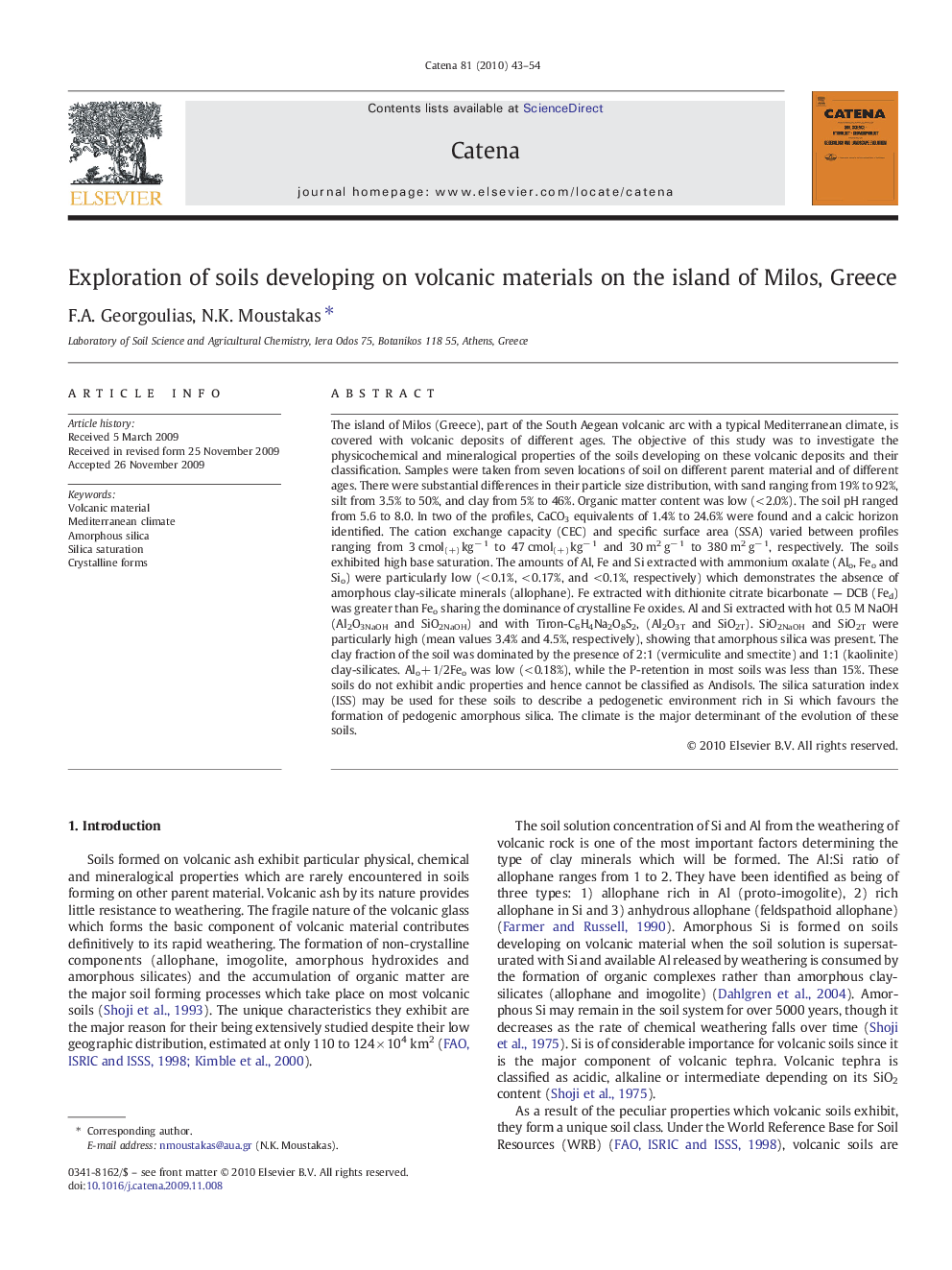| Article ID | Journal | Published Year | Pages | File Type |
|---|---|---|---|---|
| 4572119 | CATENA | 2010 | 12 Pages |
Abstract
The island of Milos (Greece), part of the South Aegean volcanic arc with a typical Mediterranean climate, is covered with volcanic deposits of different ages. The objective of this study was to investigate the physicochemical and mineralogical properties of the soils developing on these volcanic deposits and their classification. Samples were taken from seven locations of soil on different parent material and of different ages. There were substantial differences in their particle size distribution, with sand ranging from 19% to 92%, silt from 3.5% to 50%, and clay from 5% to 46%. Organic matter content was low (< 2.0%). The soil pH ranged from 5.6 to 8.0. In two of the profiles, CaCO3 equivalents of 1.4% to 24.6% were found and a calcic horizon identified. The cation exchange capacity (CEC) and specific surface area (SSA) varied between profiles ranging from 3 cmol(+) kgâ 1 to 47 cmol(+) kgâ 1 and 30 m2 gâ 1 to 380 m2 gâ 1, respectively. The soils exhibited high base saturation. The amounts of Al, Fe and Si extracted with ammonium oxalate (Îlo, Feo and Sio) were particularly low (< 0.1%, < 0.17%, and < 0.1%, respectively) which demonstrates the absence of amorphous clay-silicate minerals (allophane). Fe extracted with dithionite citrate bicarbonate - DCB (Fed) was greater than Feo sharing the dominance of crystalline Fe oxides. Al and Si extracted with hot 0.5 M NaOH (Al2Î3NaOH and SiÎ2NaOH) and with Τiron-C6H4Na2O8S2, (Al2Î3Τ and SiÎ2Τ). SiÎ2NaOH and SiÎ2Τ were particularly high (mean values 3.4% and 4.5%, respectively), showing that amorphous silica was present. The clay fraction of the soil was dominated by the presence of 2:1 (vermiculite and smectite) and 1:1 (kaolinite) clay-silicates. Alo+ 1/2Feo was low (< 0.18%), while the P-retention in most soils was less than 15%. These soils do not exhibit andic properties and hence cannot be classified as Andisols. The silica saturation index (ISS) may be used for these soils to describe a pedogenetic environment rich in Si which favours the formation of pedogenic amorphous silica. The climate is the major determinant of the evolution of these soils.
Related Topics
Physical Sciences and Engineering
Earth and Planetary Sciences
Earth-Surface Processes
Authors
F.A. Georgoulias, N.K. Moustakas,
